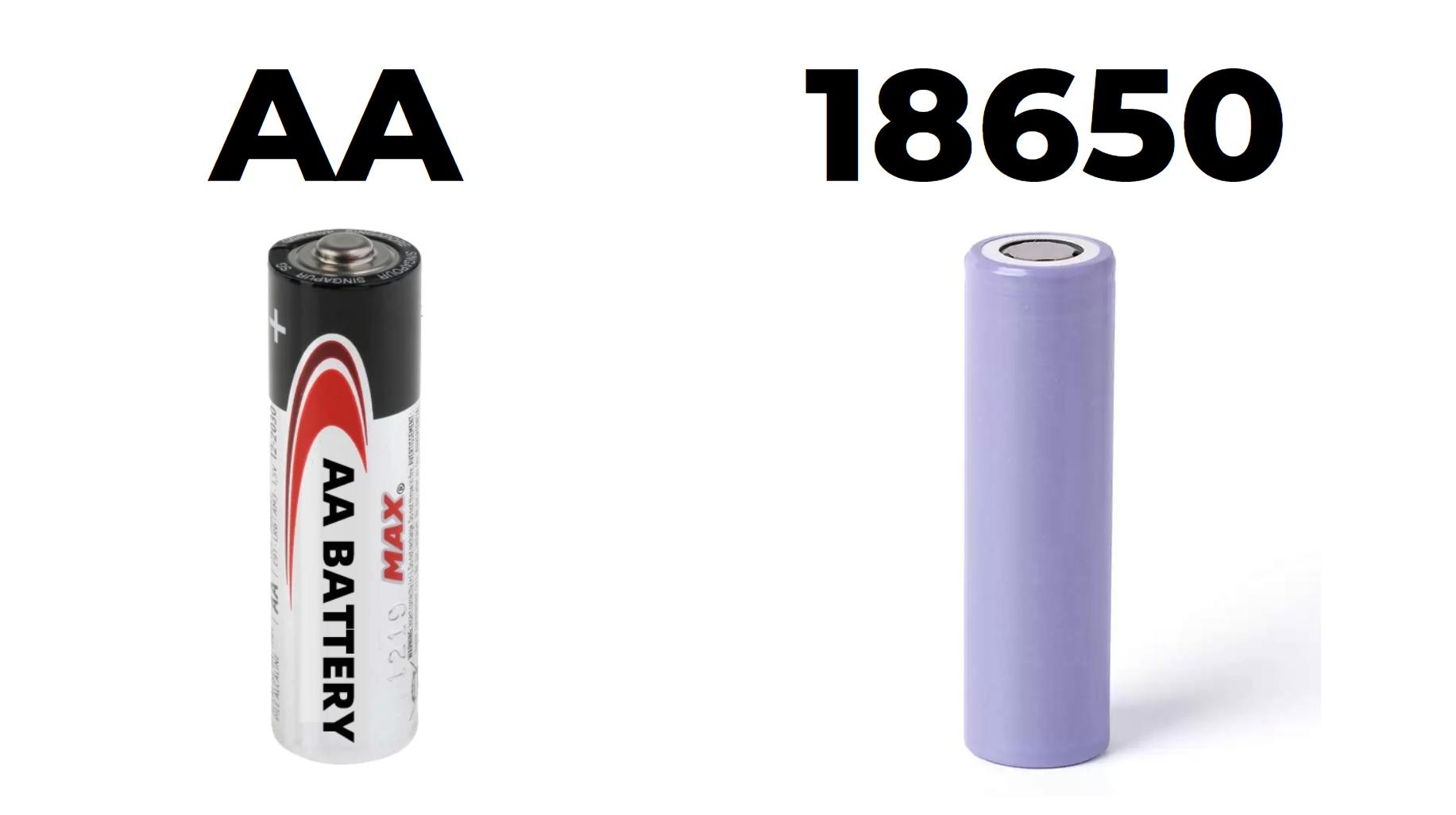The 18650 and AA batteries are two of the most commonly used battery types, each serving distinct purposes in various devices. The primary differences lie in their size, voltage, capacity, and applications, making it crucial to understand which battery is suitable for your needs.
What are the key differences between 18650 and AA batteries?
The key differences between 18650 and AA batteries include their physical dimensions, chemical composition, and energy storage capabilities:
- Size: The 18650 battery measures approximately 18mm in diameter and 65mm in length, while an AA battery typically measures about 14.5mm in diameter and 50.5mm in length.
- Voltage: The nominal voltage of an 18650 battery is around 3.7V, whereas an AA battery has a nominal voltage of either 1.5V (alkaline) or 1.2V (NiMH).
- Capacity: An 18650 battery can have capacities ranging from 1800mAh to 3500mAh, while an AA battery generally ranges from about 1800mAh to 3000mAh.
Chart: Size, Voltage, and Capacity Comparison
| Feature | 18650 Battery | AA Battery |
|---|---|---|
| Diameter | 18mm | 14.5mm |
| Length | 65mm | 50.5mm |
| Nominal Voltage | 3.7V | 1.5V (alkaline) / 1.2V (NiMH) |
| Capacity | 1800mAh – 3500mAh | 1800mAh – 3000mAh |
How do voltage and capacity compare between the two types?
When comparing voltage and capacity:
- The higher voltage of the 18650 battery allows it to power devices that require more energy, making it ideal for high-drain applications like laptops and electric vehicles.
- Although AA batteries are versatile for everyday devices, they generally offer lower energy density compared to 18650 batteries.
This difference means that while you can use both types in various applications, their effectiveness will depend on the power requirements of the device.Chart: Voltage and Capacity Overview
| Battery Type | Voltage (Nominal) | Capacity Range |
|---|---|---|
| 18650 | 3.7V | 1800mAh – 3500mAh |
| AA | 1.5V (alkaline) / 1.2V (NiMH) | 1800mAh – 3000mAh |
What are the common applications for each battery type?
Each battery type has its preferred applications:
- 18650 Batteries: Commonly used in high-drain devices such as laptops, power tools, electric vehicles, and high-performance flashlights due to their higher capacity and energy density.
- AA Batteries: Typically found in household items like remote controls, toys, cameras, and other low-drain devices where size constraints are less critical.
Understanding these applications helps consumers select the appropriate battery for their specific needs.Chart: Common Applications
| Battery Type | Common Uses |
|---|---|
| 18650 | Laptops, power tools, electric vehicles |
| AA | Remote controls, toys, cameras |
Can you use 18650 batteries instead of AA batteries?
While it is technically possible to use an 18650 battery in place of an AA battery, it is not advisable without proper adapters or modifications due to significant differences in size and voltage:
- Devices designed for AA batteries may not accommodate the larger size of an 18650.
- Substituting an 18650 for an AA without appropriate circuitry can lead to device damage or safety hazards.
Always check compatibility before attempting to interchange these battery types.
Which battery is more cost-effective?
When considering cost-effectiveness:
- The initial purchase price of an AA battery is typically lower than that of an 18650, but this can be misleading due to their single-use nature.
- In contrast, while an 18650 battery may have a higher upfront cost, its rechargeable nature means it can be used multiple times—often thousands of cycles—making it more economical over time for high-drain applications.
Chart: Cost Comparison
| Battery Type | Initial Cost | Lifespan (Charge Cycles) |
|---|---|---|
| 18650 | Higher | Up to 1000+ cycles |
| AA | Lower | Single-use or up to ~500 cycles (rechargeable) |
Expert Opinions
“Understanding the differences between these two popular battery types is essential for making informed choices,” says Dr. Emily Chen, a specialist in energy storage systems. “While both have their merits, choosing the right one based on application requirements can significantly enhance performance.”
EBL Batteries Review: AA, 14500, and 18650 – A Complete 5-Minute Breakdown!
Conclusion
The differences between 18650 and AA batteries extend beyond size; they include variations in voltage, capacity, applications, and cost-effectiveness. By understanding these distinctions, consumers can make informed decisions about which battery type best suits their needs.
Frequently Asked Questions
- Can I use a rechargeable AA battery instead of an 18650?
Generally no; they have different voltages and capacities that may not be compatible. - How do I know if my device requires an AA or an 18650?
Check your device specifications or user manual for recommended battery types. - Are there adapters available for using different battery types?
Yes, some adapters allow you to use different sizes but check compatibility carefully. - How long does each type of battery last under normal use?
It varies by application; however, typically a fully charged lithium-ion (like an 18650) will last longer than alkaline AA under similar loads. - Which type has better performance in high-drain devices?
The 18650 battery generally outperforms AA batteries in high-drain applications due to its higher energy density.



